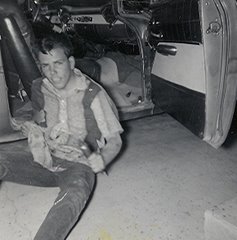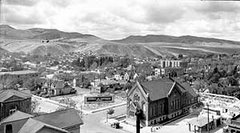


Picasso didn't paint this parking meter, or the walls that seperate old and new, and real and unreal, in Albuquerque. Even so these paintings all may be
"cubism".
Maybe they are about choice and freedom.
Pablo Picasso seems was interesting in expressing his agency. Of this mural above he said:
The Spanish struggle is the fight of reaction against the people, against freedom. My whole life as an artist has been nothing more than a continuous struggle against reaction and the death of art. How could anybody think for a moment that I could be in agreement with reaction and death? ... In the panel on which I am working, which I shall call Guernica, and in all my recent works of art, I clearly express my abhorrence of the military caste, which has sunk Spain in an ocean of pain and death
Picasso was know for an approach to painting called Cubism. Cubism is a painting of a normal scene but painted so that it is viewed from multiple views while the positions of some of the parts are rotated or moved so that it is odd looking and scrambled. In cubist artworks, objects are broken up, analyzed, and re-assembled in an abstracted form — instead of depicting objects from one viewpoint, the artist depicts the subject from a multitude of viewpoints to represent the subject in a greater context. Often the surfaces intersect at seemingly random angles presenting no coherent sense of depth. The background and object planes interpenetrate one another to create the ambiguous shallow space characteristic of cubism.
Albuquerque seems to have a style of art often expressed in murals. I would suggest that these murals are “cubism”
Does art exist if choice does not exist? Does having individual agency open the door to understand art? Art is a term that is used to describe a particular type of creative production generated by human beings, and the term usually implies some degree of aesthic value. (at least this is what usally claimed) . An artist makes a work of art for various purposes, such as creating an experience for others, or as part of a ritual. The boundaries of "art" is subjective, but the impetus or reason for art is often called human creativity.
Here lies the idea that choice and agency may have a connection. Aesthetics is a branch of philosophy sometimes called value theory. It results from judgments of snetiment and taste.
Art is about choice













No comments:
Post a Comment